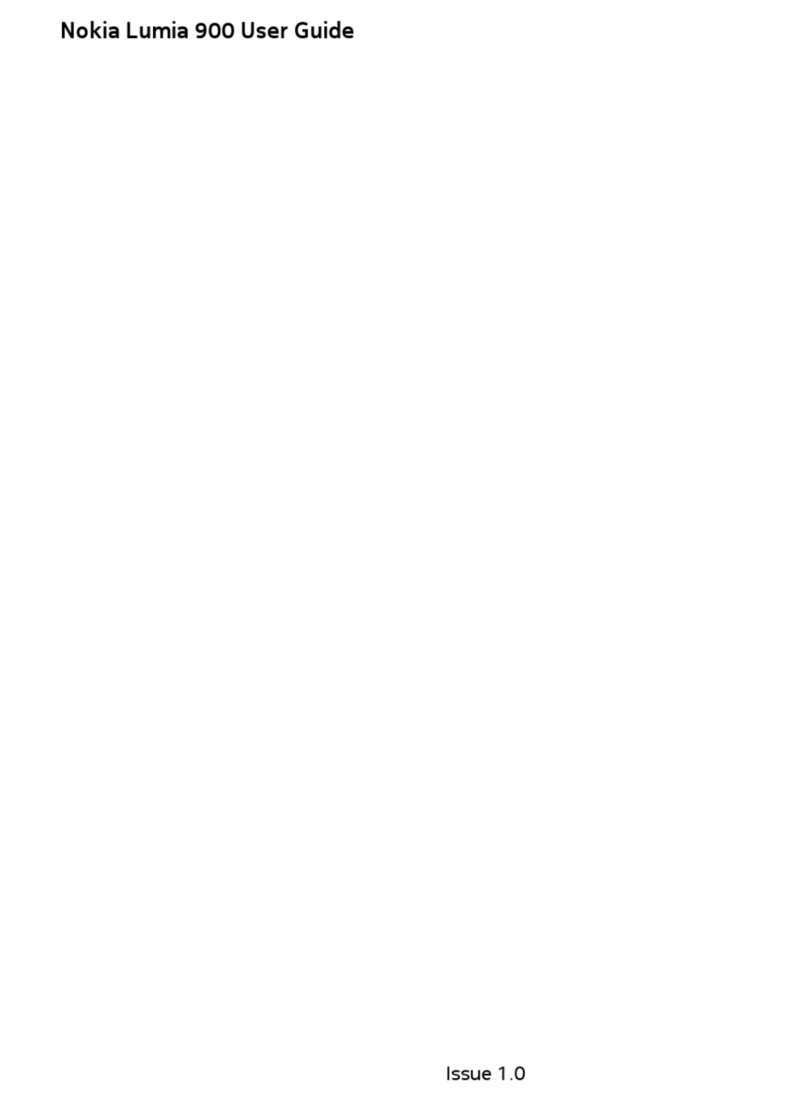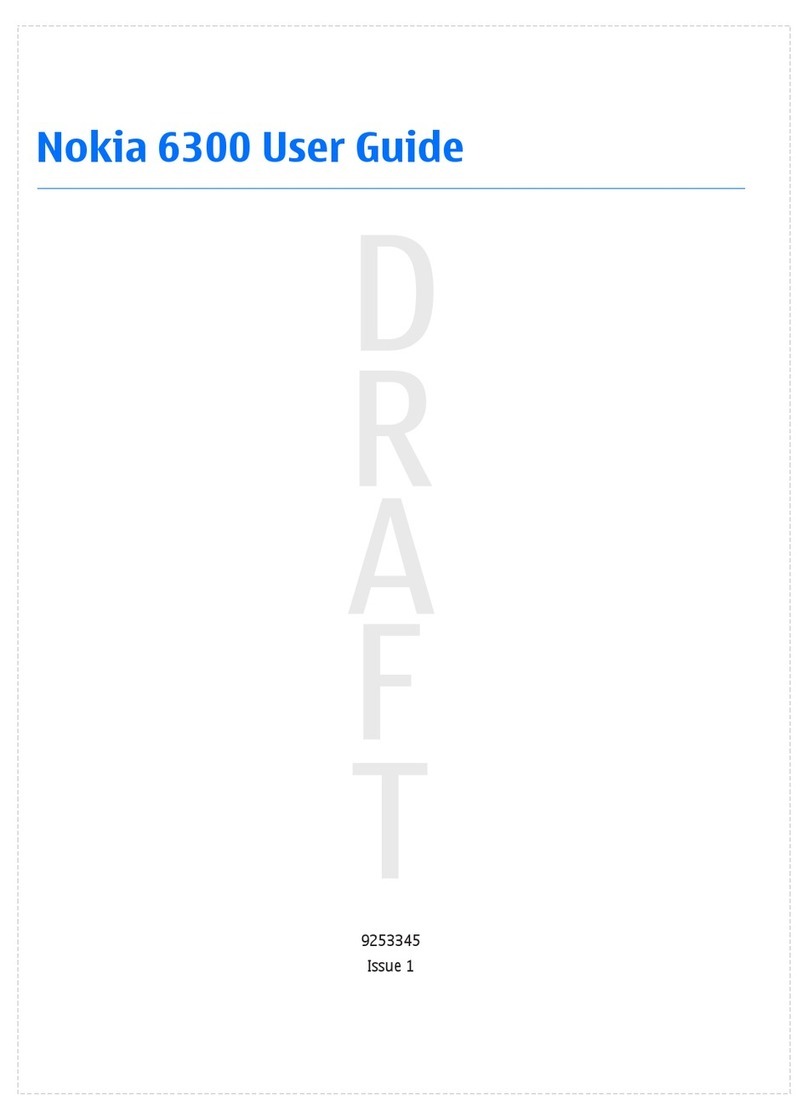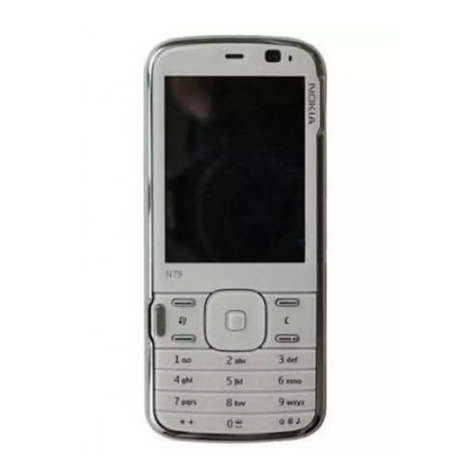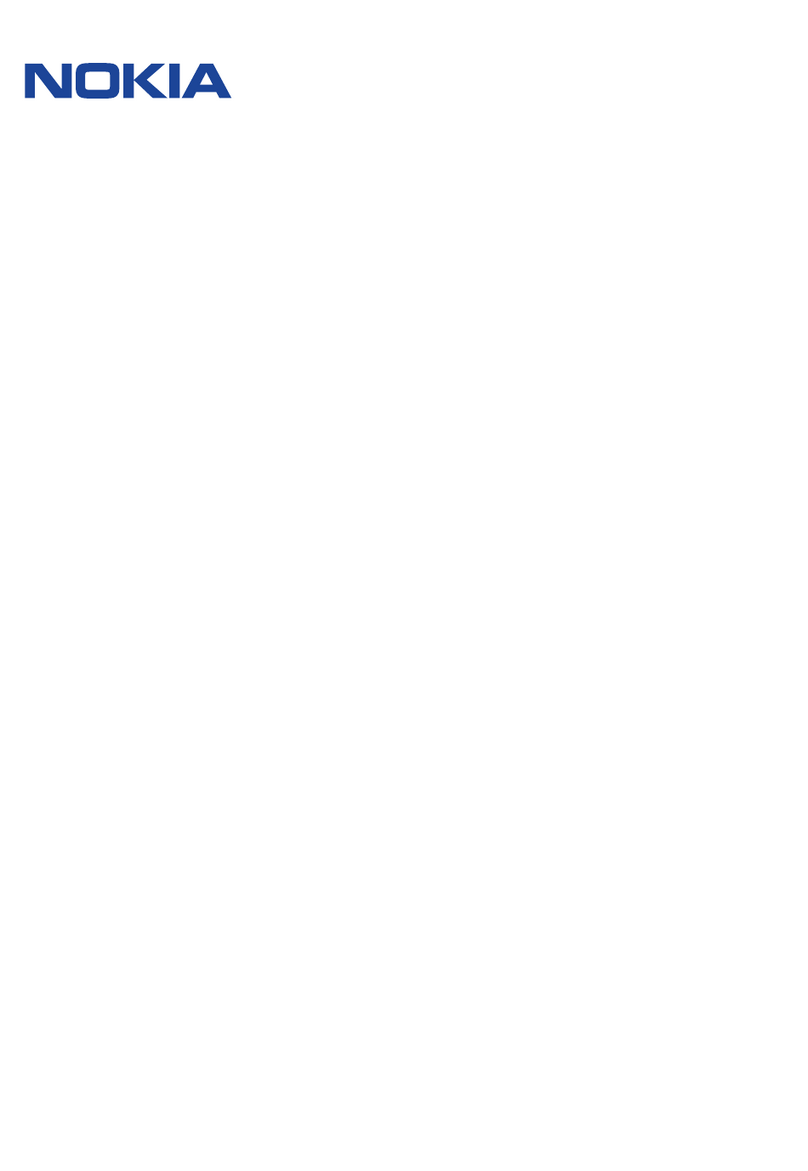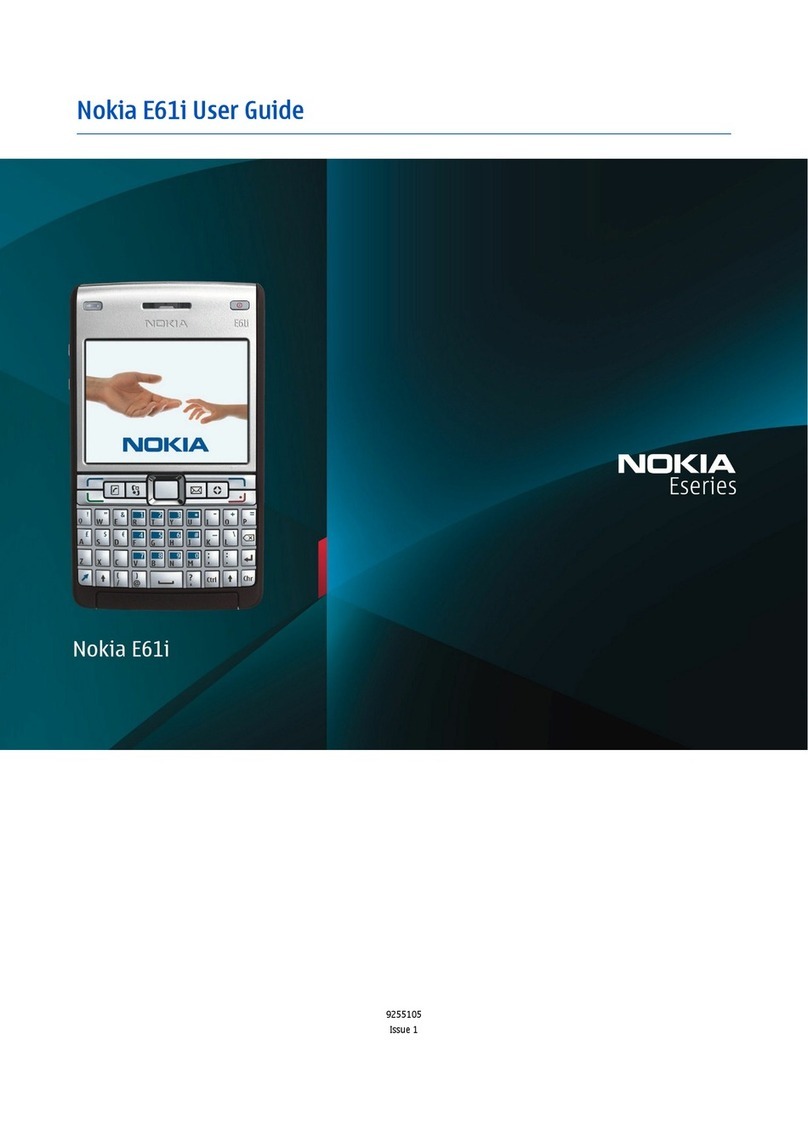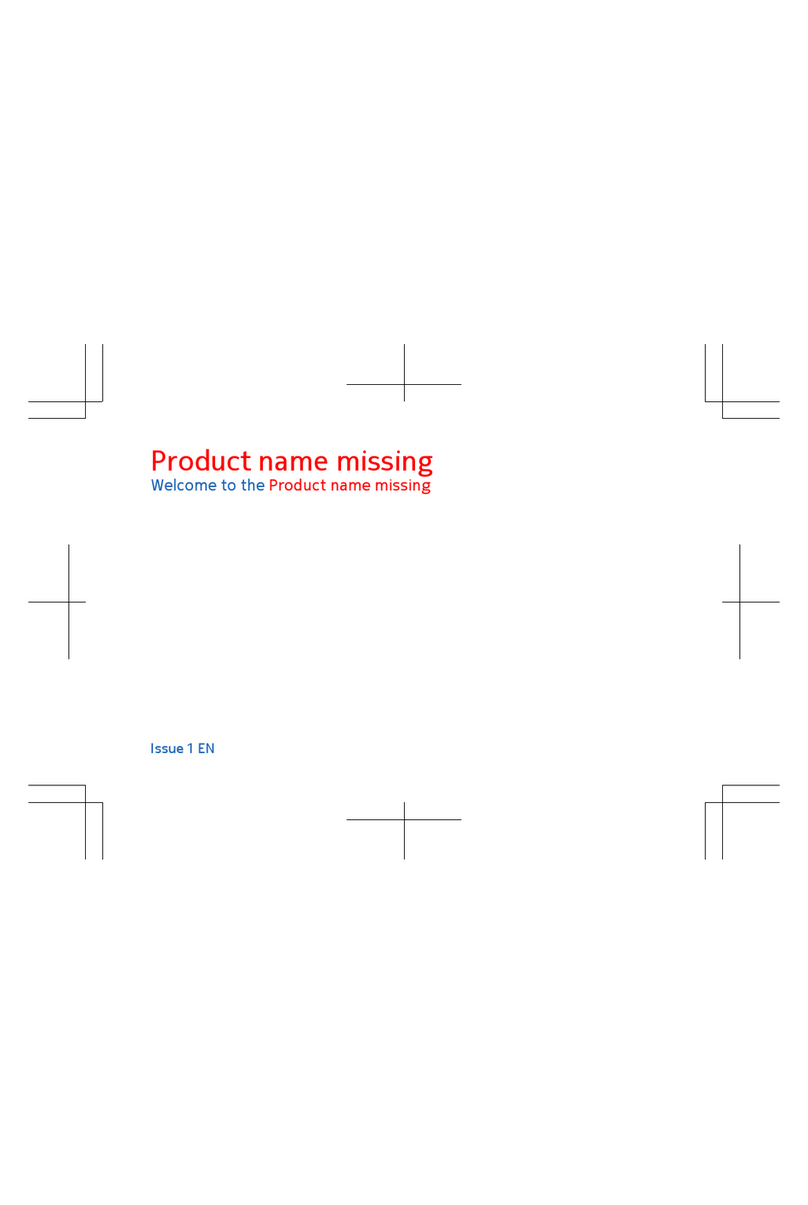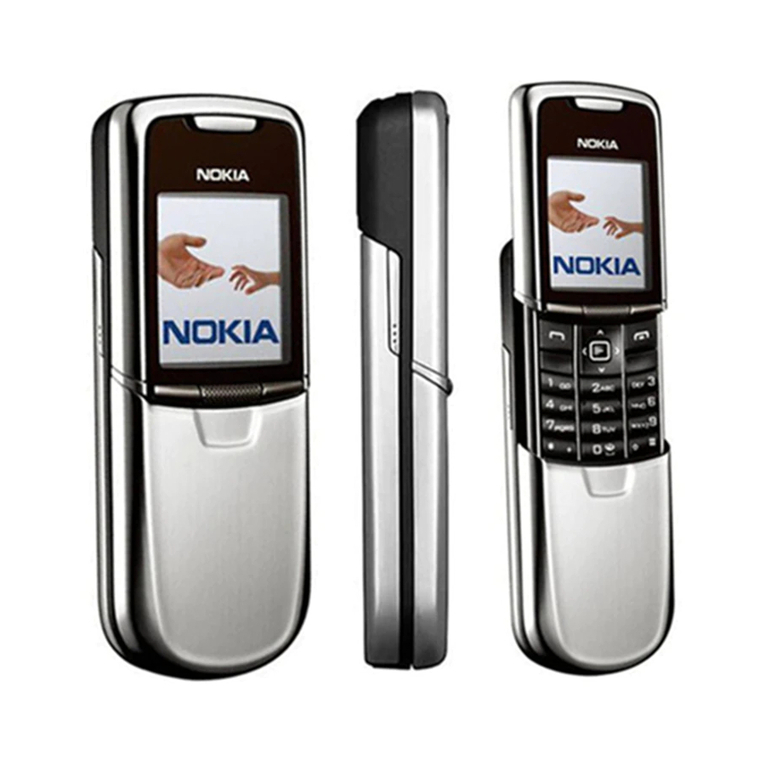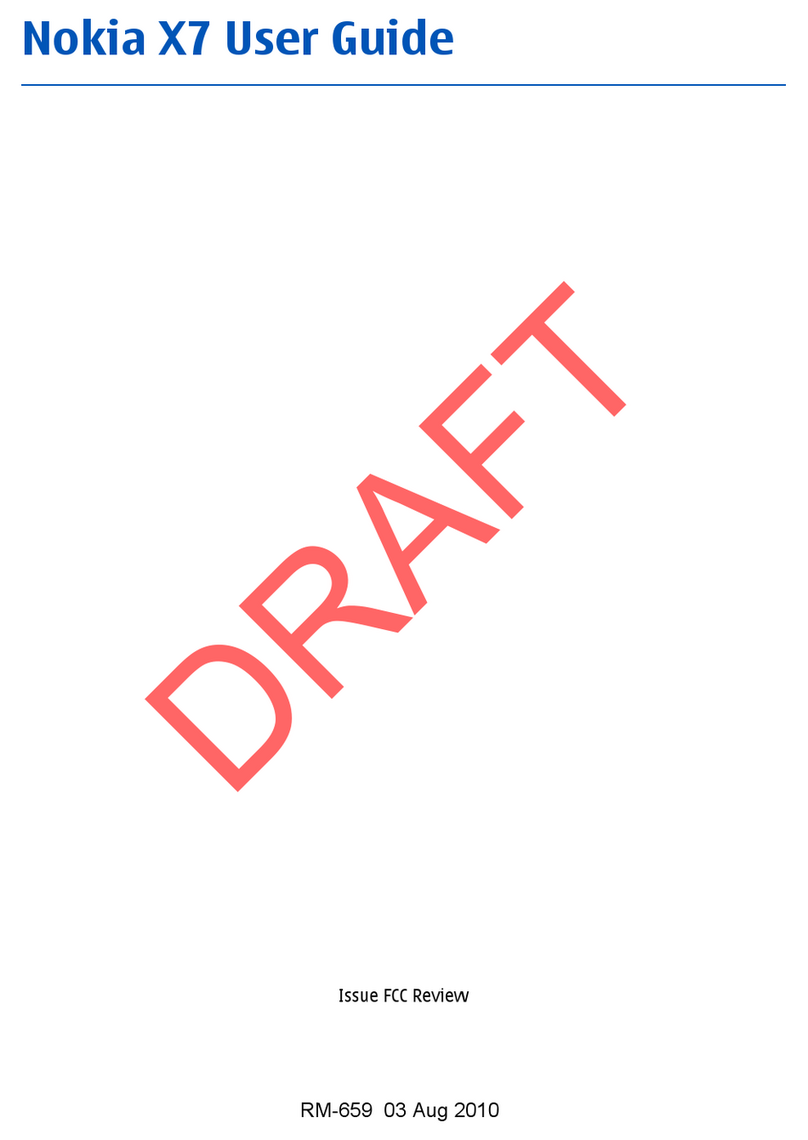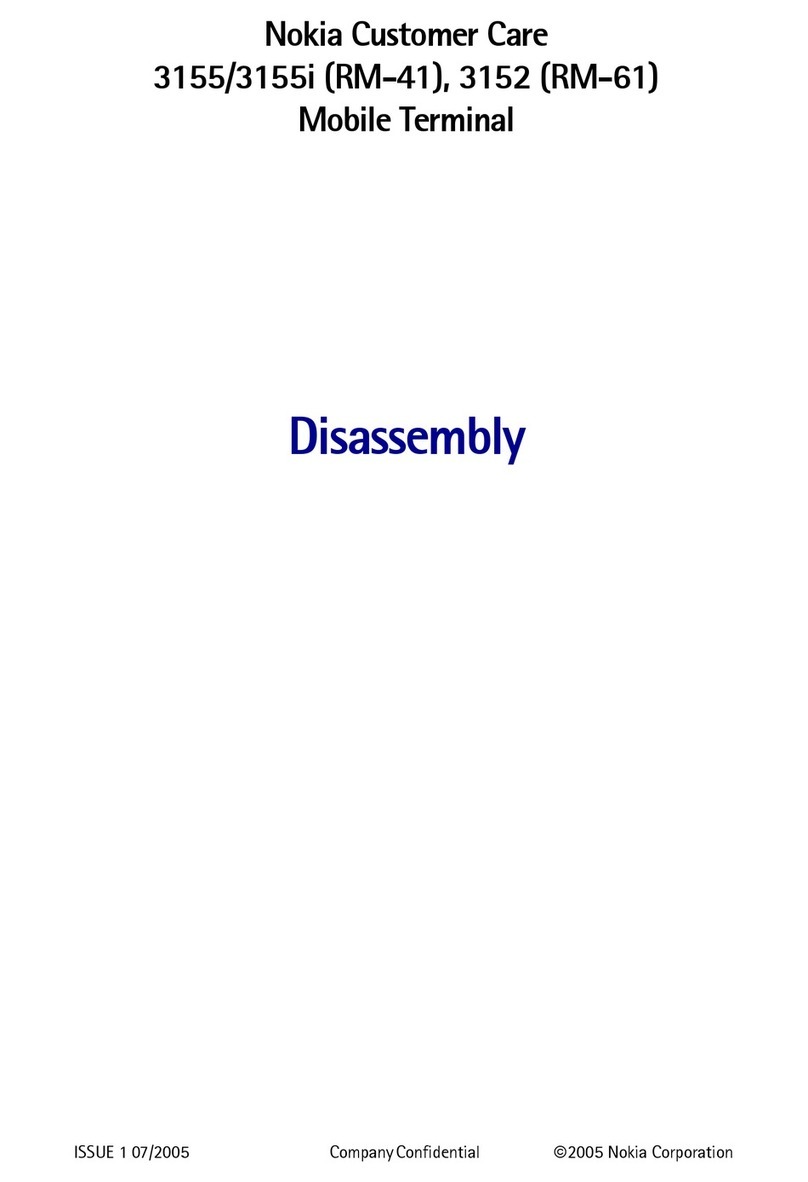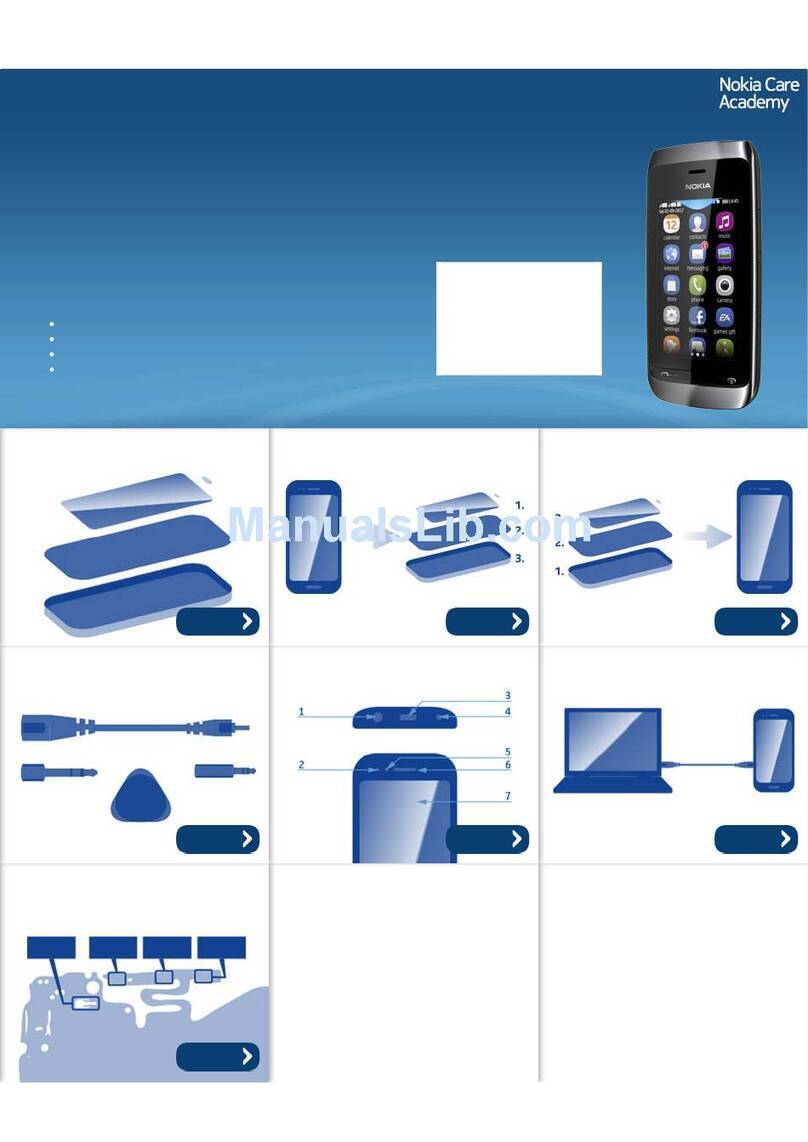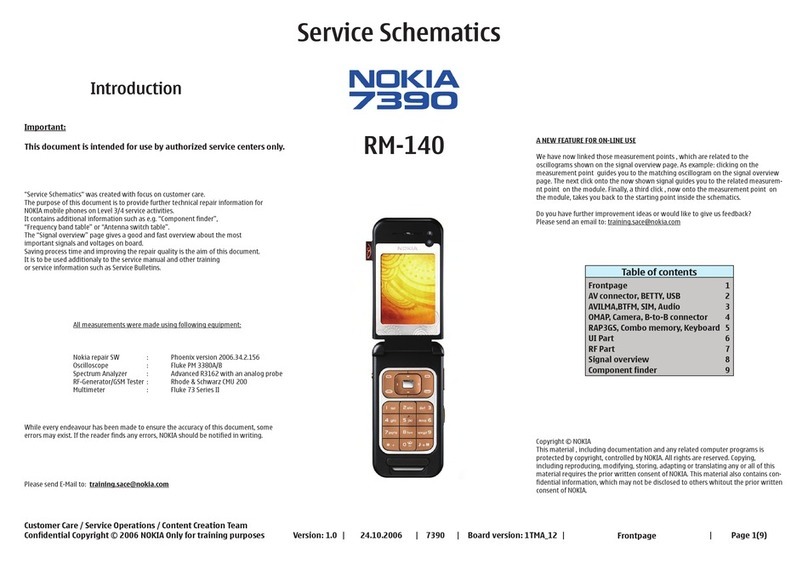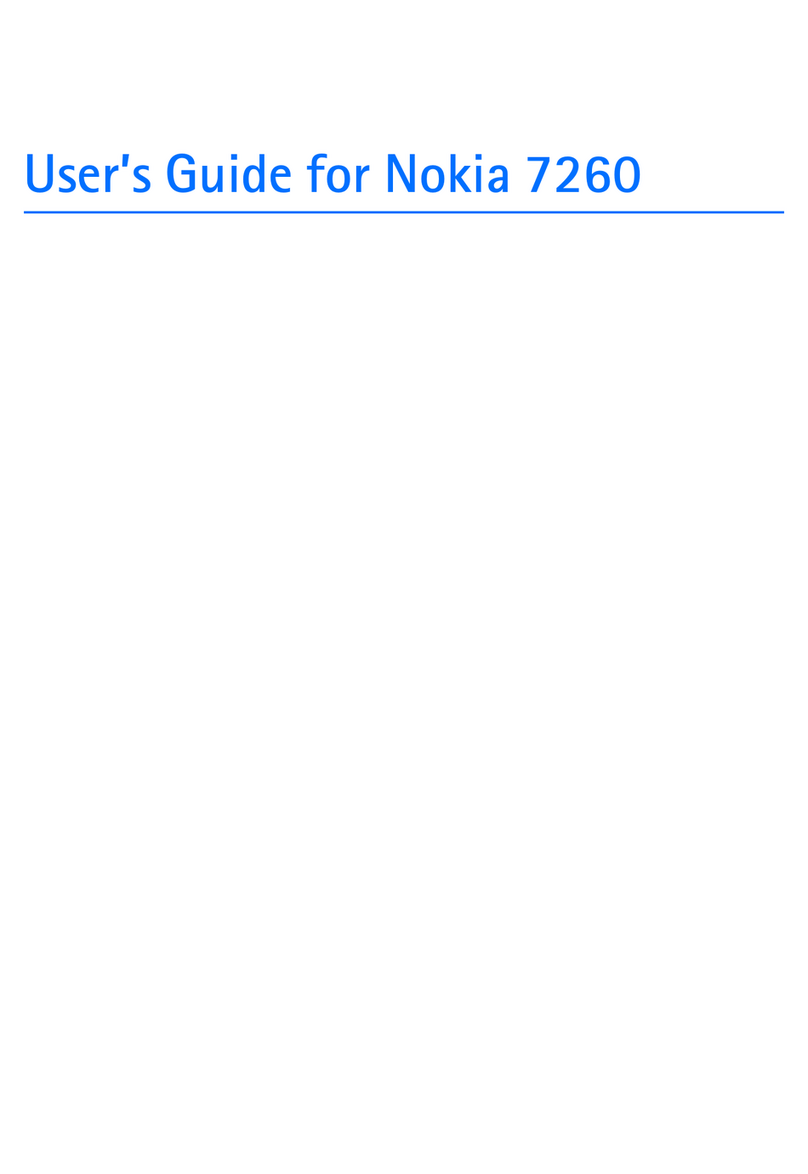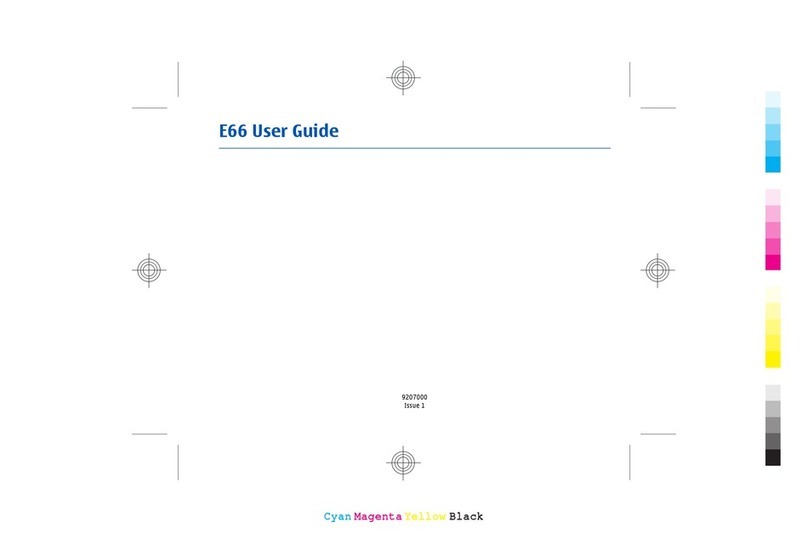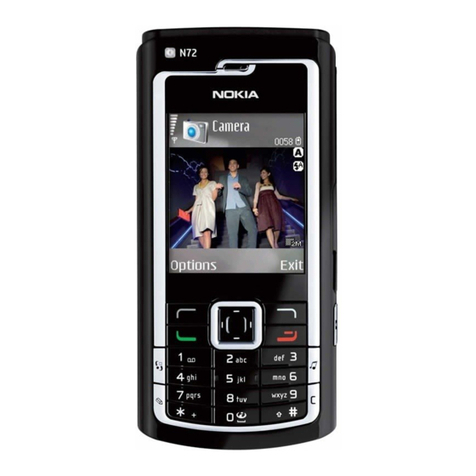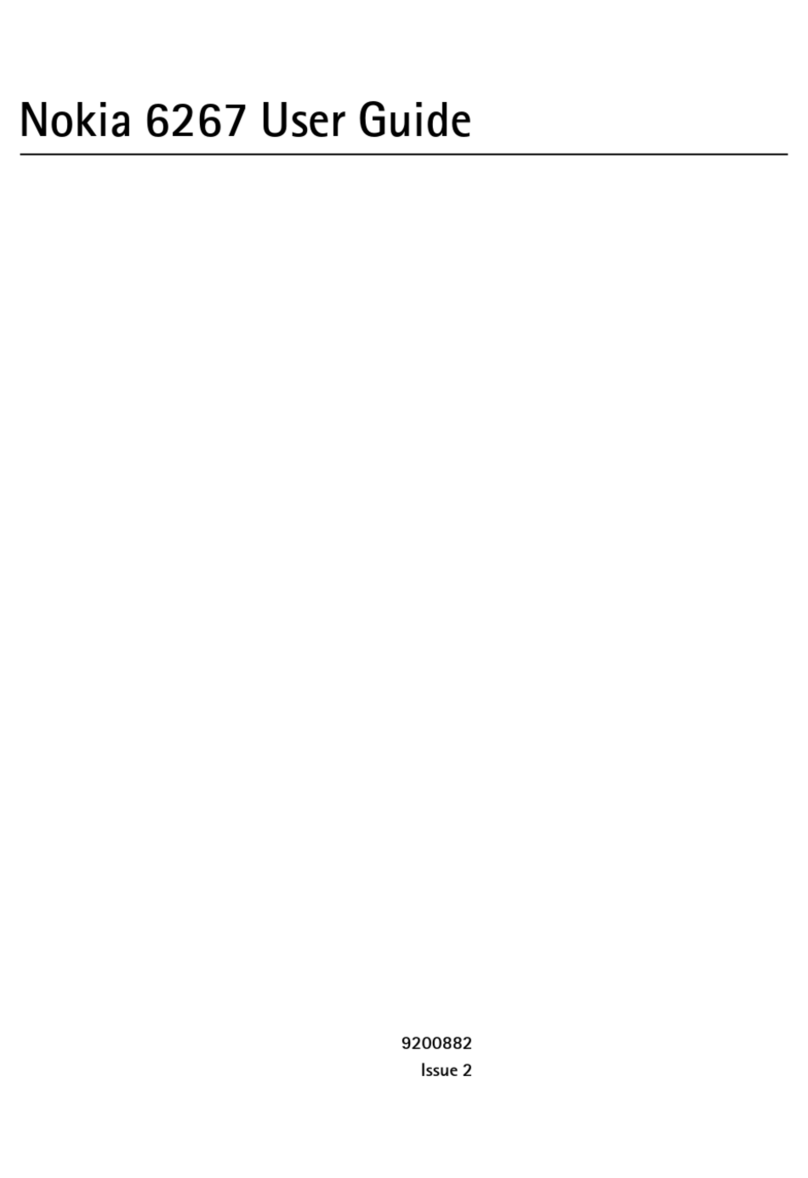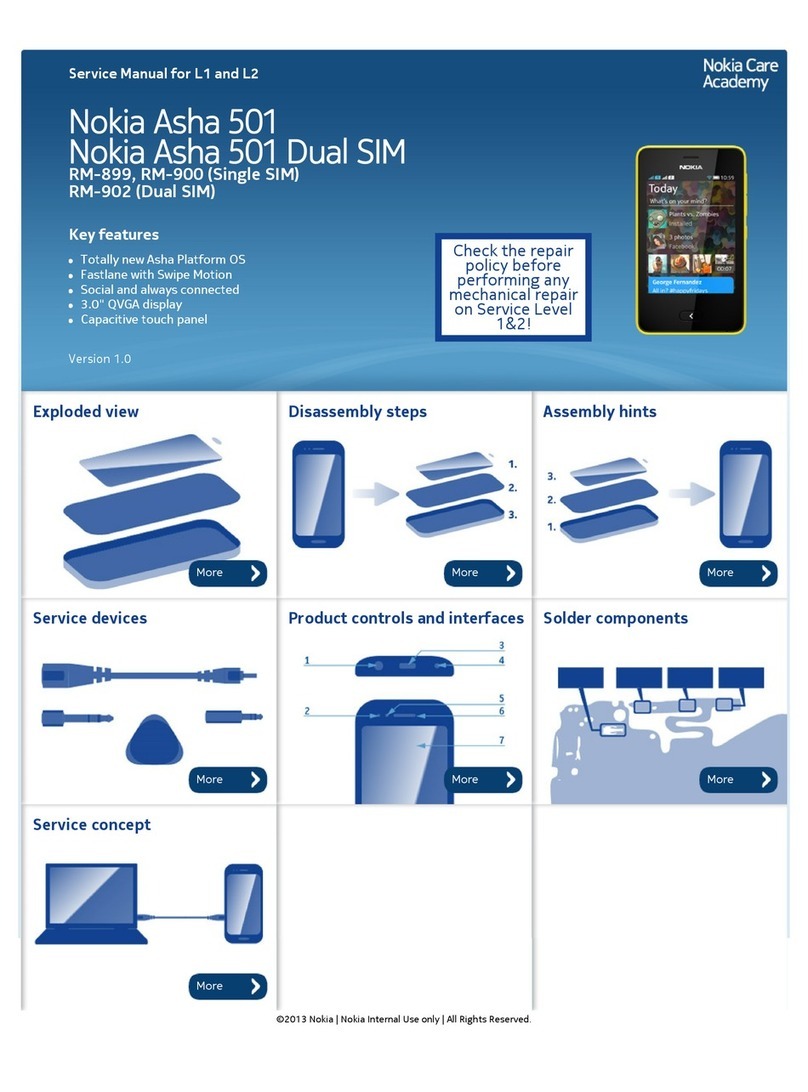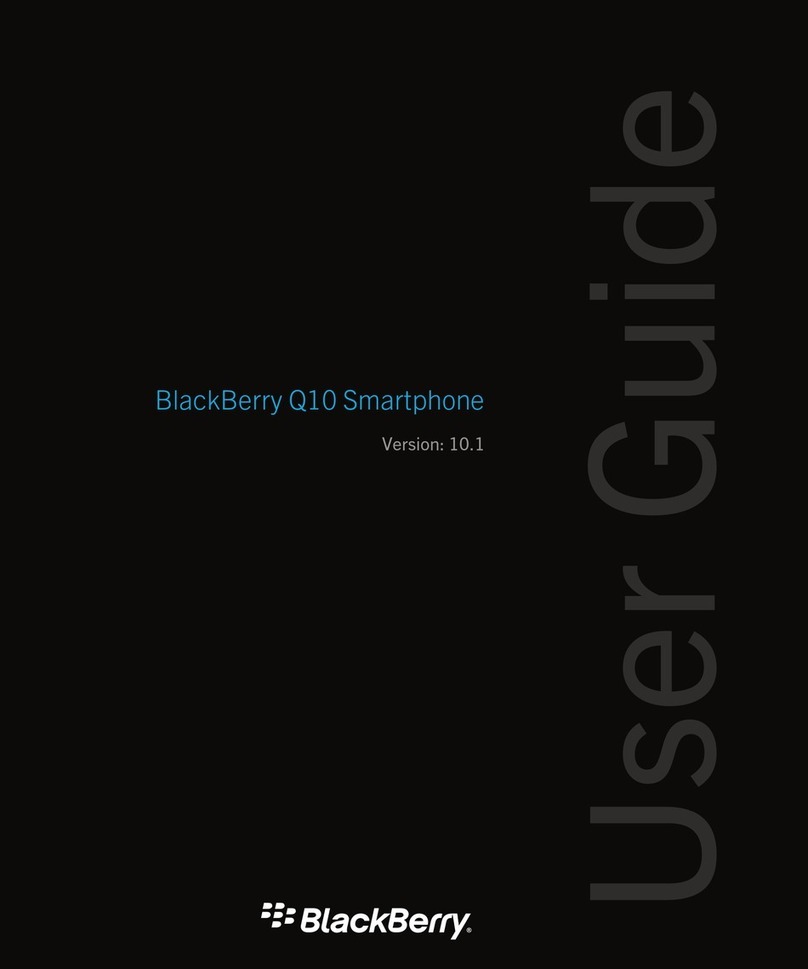
2608 RM-376
Service Manual Level 1&2
Page 5 (21) Confidential Issue 1
Copyright © 2008 NOKIA. All rights reserved.
5. CARE AND MAINTENANCE
This product is of superior design and craftsmanship and should be treated with care. The suggestions below will help
you to fulfill any warrantyobligations and to enjoy this productfor many years.
• Keep the phone and all its parts and accessories out of the reach of small children.
• Keep the phone dry. Precipitation, humidity and all types of liquids ormoisture can contain minerals that will corrode
electronic circuits.
• Do not use or store the phone in dusty, dirty areas. Its moving parts can be damaged.
• Do not store the phone in hot areas. High temperatures can shorten the life of electronic devices, damage batteries,
and warp or melt certain plastics.
• Do not store the phone in cold areas.When it warms up (to its normal temperature), moisture can form inside, which
may damage electronic circuit boards.
• Do not drop, knock or shake the phone. Rough handling can break internal circuit boards.
• Do not use harsh chemicals, cleaning solvents, or strong detergents to clean the phone.
• Do not paint the phone. Paint can clog the moving parts and prevent proper operation.
• Use onlythe supplied or an approved replacement antenna. Unauthorised antennas, modifications or attachments
could damage the phone and mayviolate regulations governing radio devices.
All of the above suggestions apply equally to the product, battery, charger or anyaccessory.
6. BATTERY INFORMATION
Note: A new battery’s full performance is achieved only after two or three complete charge and discharge cycles! The
battery can be charged and discharged hundreds of times but it will eventually wear out. When the operating time
(talk-time and standby time) is noticeably shorter than normal, it is time to buy a new battery. Use only batteries
approved by the phone manufacturer and recharge the battery onlywith the chargersapproved by the manufacturer.
Unplug the charger when not in use. Do not leave the battery connected to a charger for longer than a week, since
overcharging may shorten its lifetime.
If left unused a fully charged battery will discharge itself over time Temperature extremes can affect the ability of your
battery to charge.
For good operation times with Ni-Cd/NiMh batteries, discharge the battery from time to time by leaving the product
switched on until it turns itself off (or by using the battery discharge facility of any approved accessory available for the
product).
Do not attempt to discharge the battery by any other means Use the batteryonly for its intended purpose.
Never use anycharger or batterywhich is damaged.
Do not short-circuit the battery. Accidental short-circuiting can occur when a metallic object (coin, clip or pen) causes
direct connection of the + and - terminals of the battery (metal strips on the battery) for example when you carry a
spare batteryin your pocketor purse. Short-circuiting the terminals maydamage the batteryor the connecting object.
Leaving the battery in hot or cold places, such as in a closed car in summer or winter conditions, will reduce the
capacityand lifetime of the battery. Always tryto keep the batterybetween 15°C and 25°C (59°F and 7 7°F).
A phone with a hot or cold battery maytemporarilynot work, even when the battery is fully charged.
Batteries’ performance is particularlylimited in temperatures well below freezing.
Do not dispose batteries in a fire! Dispose of batteries according to local regulations (e.g. recycling).
Do not dispose as household waste.
